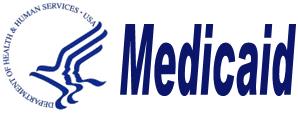Health officials discuss impacts of looming Medicaid cuts for hospitals, talk about what comes next

By Melissa Patrick
Kentucky Health News
President Trump’s “One Big Beautiful Bill Act” makes drastic changes to how Kentucky’s hospitals are paid and could result in cuts to services or even closure for some, according to health officials.
The new law is expected to cut $911 billion from Medicaid over the next 10 years. In Kentucky, those cuts will amount to $38 billion in federal cuts to the Medicaid program over 10 years, according to the liberal-leaning Kentucky Center for Economic Policy.

Nancy Galvagni, president and CEO of the Kentucky Hospital Association, said Kentucky hospitals are already bracing for these cuts.
“You can’t take billions of dollars out of the state and think there’s not going to be consequences,” she said.
The bill, which Trump signed into law July 4, adds work requirements and additional eligibility redetermination requirements for people who are on Medicaid through the expansion of the program to people who earn up to 138% of the federal poverty level. KCEP projects that these requirements, which will go into effect over the next few years, will result in 149,000 Kentuckians losing coverage, largely because of the paperwork involved in reporting.
Mark Birdwhistell, senior vice president for health and public policy for the University of Kentucky, said there is still time to make changes to the law before the various deadlines kick in. Those deadlines could even be extended.
“So changing the deadline to me is part of the normal work,” he said. “This is about the sixth or seventh budget reconciliation bill that I’ve been involved with in my 45 years of working in the Medicaid space. These pieces of legislation are, they’re setting a direction, but they’re not necessarily the destination.”

Birdwhistell recognized that “moving the deadline is not fixing anything,” but instead “gives us more time” to fix it.
Galvagni and Birdwhistell said they did not oppose the work requirements, largely because Kentucky has already passed legislation calling for them.
Further cuts to Medicaid will come from the reduction in provider taxes and cuts to state-directed payments, which allow increased reimbursement rates for hospitals and health care providers.
Proponents of the bill argue that the changes to Medicaid will reduce waste, fraud and abuse while maintaining Medicaid for the people it was intended to serve, including children, pregnant women, the elderly and people with disabilities.
Medicaid covers about one in three Kentuckians, or 1.44 million people. Click here to see how many people are on Medicaid in each Kentucky county.
State-directed payments
Galvagni said cuts to the state-directed payments that allow hospitals to receive a higher reimbursement rate for Medicaid patients are of grave concern.
In Kentucky, state-directed payments allow hospitals to be paid an average commercial rate for all Medicaid patients, instead of the current Medicaid rate, which is often below that amount. The additional money for the provider payments comes from provider taxes, which are used to draw down additional federal matching funds for Medicaid.
Both Galvagni and Birdwhistell called Kentucky’s “gold standard” state-directed payment program a model that should be replicated across the nation.
“We can show how the money’s being used and how it’s improving the quality of care for our patients,” Galvagni said. “It’s probably one of the few in the nation that’s value-based, where our hospitals aren’t just working on quality, but they are meeting specific quality measures, and if they don’t meet the measures … they don’t get part of the funds.”
The new law says the amount of the state-directed payments cannot be any higher than the current Medicare rate. These cuts will start January 2028, when they will be reduced by 10% each year until they reach the Medicare payment limit.
In Kentucky, Galvagni said this would amount to a 90% loss of the current state-directed payments, which are paid at an average commercial rate under the Hospital Rate Improvement Program, or HRIP.
“And if these state-directed payments are wiped out, that’s about half of hospitals’ revenue from the Medicaid program,” she said.
Asked if hospitals can survive these cuts, Birdwhistell said: “My tagline on that piece is, time is our friend.”
“Somewhere between now and January 2028, we’ll either push for an extension of that date or we’ll come up with an alternative payment rate,” Birdwhistell said. “Average commercial rate seems to be a toxic term for the Senate. The Medicare rate is somewhat of a non-starter for us, because Medicare in the Southeast region does not even reimburse us sufficiently to cover our whole costs. So that’s a problem.”
Birdwhistell said his goal is to get to a payment that is adequate to recognize the unique care needs for the Medicaid population, which is different in complexity and demands than the Medicare population.
“I think many of us, including UK, recognize that we may never have the reimbursement as high as it was,” he said.
Galvagni explained that Kentucky’s Medicare rate is one of the lowest in the nation, covering only 87% of the cost, and that the Medicaid rate, without state-directed payments, is about 82%. Further, she said Kentucky hospitals serve a high proportion of patients who are on these government programs.
“So what business can stay in business very long if they’re not even covering their cost?” she asked.
Provider taxes
The new law prohibits states from imposing new or higher provider taxes and requires states that expanded Medicaid to reduce their provider taxes by 0.5% each year until they reach a cap of 3.5% in 2032. The current cap is 6%, and Kentucky’s provider tax is 5%. The reductions will start in 2028.
Galvagni said the problem is that with these drops in the provider tax, Kentucky won’t even be able to access the allowed Medicare funding match.
Birdwhistell said, “We’ve got more work to do.”
Rural Health Transformation Program
To address concerns about the bill’s potential impact on rural hospitals, the U.S. Senate established a $50 billion Rural Health Transformation Program in the bill. The program will allocate $10 billion annually to states through an application process over five years. Half of the money will be distributed equally among all states with an approved application, and the other half will be distributed by the Centers for Medicare and Medicaid Services at its discretion.
Asked if the $50 billion was enough to fill the gap from the loss of higher state-directed payments, Birdwhistell said, “Personally, I think the $50 billion is insufficient to fully, fully fill that gap.”
Galvagni said that while the Rural Health Transformation Program will provide $100 million annually to Kentucky, it will not replace the $1 billion in annual losses from the state-directed payments.
Impact on hospitals
Galvagni said CEOs are telling her that if the money is going away, they will have to make tough choices.
“We know jobs are going to be lost, and we know that has not only an access impact, but it has an economic impact on those communities, because hospitals are often the largest employers, especially in the rural areas,” she said. “And if the service goes away, that doesn’t just affect Medicaid patients; it affects everybody. Everybody who uses that service is going to feel it.”
Furthermore, she said the bill’s impact on rural hospitals will be substantial, with some potentially closing due to the loss of revenue.
An analysis by the Sheps Center for Health Services Research at the University of North Carolina found that 35 Kentucky hospitals were among 338 nationwide that are considered at risk of closing under the new law’s Medicaid provisions.
Birdwhistell pushed back on the Sheps Center report, noting that of the 35 rural Kentucky hospitals considered at risk of closure because of their high Medicaid utilization, only two of them have had a negative cash flow for three years.
“So they’re making a big leap in my mind that because they serve quite a few Medicaid patients, that they’re at risk,” he said.
David Horowitz reports for the Bowling Green Daily News that two hospitals in the region are among the 35 rural Kentucky hospitals considered at risk of closing: The Medical Center at Caverna and T.J. Samson Community Hospital. One person told Horowitz that they were concerned about getting timely access to care since it would take her an hour to an hour and a half to get to the next-closest hospital, in Bowling Green.
In another article, David Asher, chief of strategy at Harrison Memorial Hospital in Cynthiana, told Tradeoffs, a nonprofit news organization that writes about health policy, that even though the cuts won’t go into effect until late 2027 or early 2028, that’s not much time for rural hospitals to adapt. According to the Tradeoffs article, “Harrison Memorial must start looking now for ways to cut expenses by about $2 million a year, Asher said. With less Medicaid revenue, he added, ‘we’re going to have to really tighten down, see what services are making money, what services can survive.’”
“I mean, will we survive? I’m pretty confident that we will,” Asher told Tradeoffs. “But will we be operating like we do today? Chances are high that we’re not going to be.”
What comes next?
Birdwhistell said he will continue to work with the congressional delegation to change the upper limit allowed in the state-directed payments.
“I think the most important message that I need to deliver is that reducing these payments to the Medicare upper payment limit is the inappropriate target. It’s the inappropriate destination,” he said. “There has to be, because of the complexity of the patient’s needs, a new payment upper limit.”
Galvagni said KHA aims to further explain the “terrible impact” that this bill is going to have on the state and to see if it is possible for some “course correction.”
Galvagni said KHA will continue to advocate for reversing the policy that caps Medicaid payments at the Medicare rate. She also called for a comprehensive overhaul of the Medicare payment system to address its many flaws.
Further, she said KHA will explore the possibility of phasing out the old provider tax that does not directly benefit hospitals. Birdwhistell said the challenge with this request is that it will create an obligation for increased general funds.
Asked if hospitals can wait to see if the Medicaid state-directed payments and provider tax changes get delayed, as often happens, Galvagni said: “I don’t know how you operate a business on something that might happen, right? This might get changed. Well, what if it doesn’t? I mean, you still have to plan for what is in the law today, right? And that’s great if it gets delayed, but at the end of the day, it’s a bad policy.”